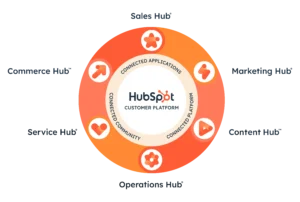In the era of digital transformation, APIs have emerged as a powerful tool for connecting applications and services. By providing a standardized way to access and exchange data, APIs have revolutionized the way businesses operate. However, building a robust API integration pipeline requires careful planning, design, and implementation.
Key Considerations for Building a Robust API Integration Pipeline
1. API Selection and Evaluation:
- Identify API Needs: Clearly define your API requirements based on your application’s specific needs.
- Evaluate API Providers: Consider factors like reliability, performance, security, documentation, and pricing.
- Assess API Limitations: Understand the rate limits, quotas, and other constraints imposed by the API provider.
2. API Design and Architecture:
- RESTful API Design: Adhere to REST principles for a clean and intuitive API design.
- API Versioning: Implement a versioning strategy to manage changes and avoid breaking existing integrations.
- Error Handling and Status Codes: Define clear error codes and messages to help developers troubleshoot issues.
- Security Measures:
- Authentication and Authorization: Implement robust authentication mechanisms (e.g., OAuth, API keys) and authorization controls to protect sensitive data.
- Rate Limiting: Enforce rate limits to prevent abuse and ensure fair usage.
- Input Validation: Validate input parameters to prevent malicious attacks and data corruption.
- Data Encryption: Encrypt sensitive data transmitted over the network.
3. API Integration Pipeline Components:
- Data Ingestion:
- API Calls: Make API calls to fetch data from the external source.
- Data Parsing: Parse the received data into a suitable format (e.g., JSON, XML).
- Data Cleaning and Transformation: Cleanse and transform the data to ensure consistency and quality.
- Data Storage:
- Database: Store the ingested data in a suitable database (e.g., relational or NoSQL).
- Data Warehouse: For large-scale data integration, consider using a data warehouse for long-term storage and analysis.
- Data Processing:
- ETL Processes: Extract, Transform, and Load data to prepare it for analysis and reporting.
- Data Enrichment: Enhance data with additional information from other sources.
- Data Analysis and Visualization:
- Data Analysis Tools: Use tools like Python (Pandas, NumPy), R, or SQL to analyze the data.
- Data Visualization Tools: Create visualizations (e.g., charts, graphs) to gain insights from the data.
4. API Integration Testing and Monitoring:
- Unit Testing: Test individual components of the integration pipeline.
- Integration Testing: Test the entire pipeline to ensure seamless data flow.
- Performance Testing: Evaluate the performance of the pipeline under various load conditions.
- Security Testing: Conduct security testing to identify vulnerabilities and potential threats.
- Monitoring and Logging: Implement monitoring tools to track API performance, error rates, and latency.
5. API Integration Best Practices:
- Clear Documentation: Provide comprehensive documentation for API consumers.
- Robust Error Handling: Implement robust error handling mechanisms to gracefully handle exceptions.
- Rate Limiting: Enforce rate limits to prevent abuse and ensure fair usage.
- Security Best Practices: Follow security best practices to protect sensitive data.
- Scalability: Design the pipeline to handle increasing data volumes and traffic.
- Flexibility: Make the pipeline adaptable to changes in API providers, data formats, and business requirements.
Conclusion
Building a robust API integration pipeline is a complex task that requires careful planning and execution. By following the key considerations and best practices outlined in this article, you can create a reliable, secure, and scalable API integration pipeline that empowers your applications and drives business growth.




